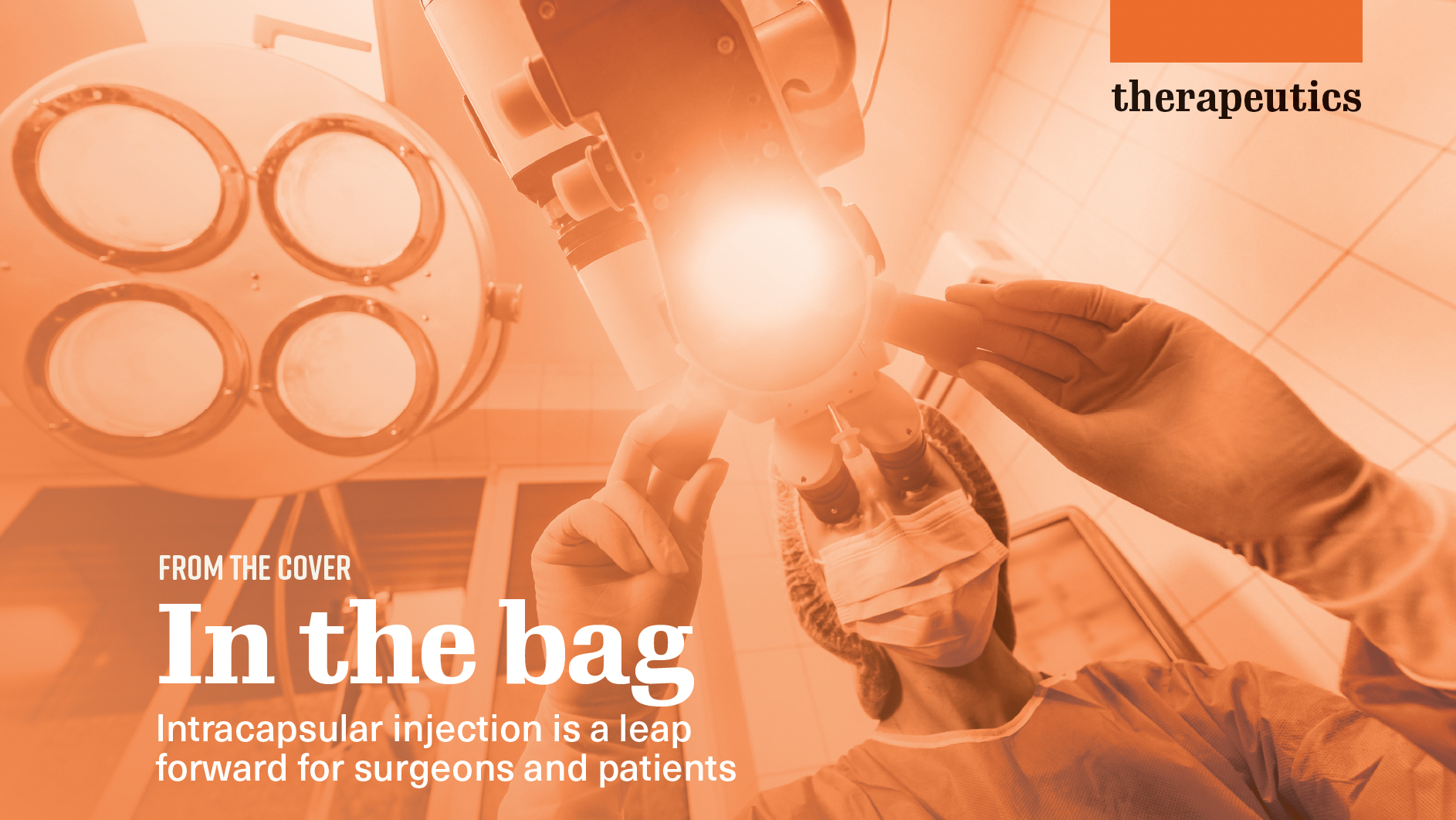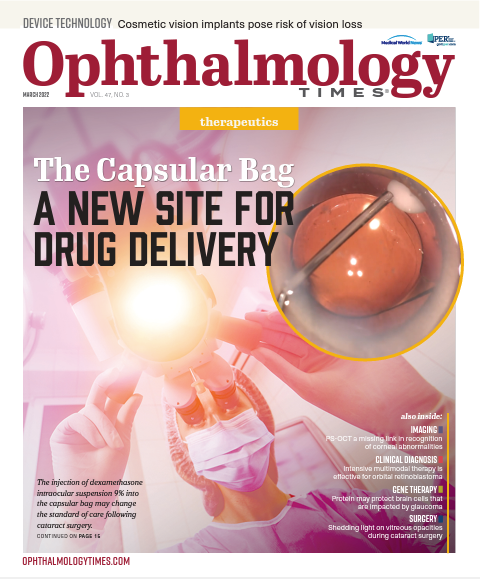Publication
Article
Digital Edition
Intracapsular injection is a leap forward for surgeons and patients
Author(s):
The injection of dexamethasone intraocular suspension 9% into the capsular bag may change the standard of care following cataract surgery.
Reviewed by Robert H. Osher, MD

A long-awaited innovation in cataract surgery postoperative care has arrived after decades of the eye drop instillation that has been the perpetual standard of care. The injection of dexamethasone intraocular suspension 9% (Dexycu; EyePoint Pharmaceuticals, Inc), a novel bioerodible spherule, into the anterior segment controls postoperative infl ammation in contrast to topical instillation of eye drops.
“Ophthalmologists have accepted the use of eye drops despite proven ineffi ciency, dexterity requirements, compliance issues, potential contamination, variable high cost, and nightmares at the pharmacy that cause patient/staff stress,” said Robert H. Osher, MD, medical director emeritus of Cincinnati Eye Institute in Ohio.
Dexamethasone intraocular suspension 9% received FDA approval in 2018 for treating postoperative infl ammation with injection into the anterior segment.
Initially, however, the drug was injected blindly through the pupil, which had the potential to cause complications, Osher described. Because of this approach, visual confi rmation of the drug volume behind the iris could not be determined, and nor could the potential for complicationsdeveloping if the drug came into contact with ocular tissues, causing corneal edema, pupil distortion, or elevated IOP.
A new mission
Osher, in collaboration with Jay S. Duker, MD, developed an easy, reliable approach to facilitate injection visualization and reduce complications in which the dexamethasone was injected into the capsular bag.
Technological advances associated with this procedure included the vortex mixer to prepare the drug in advance of the procedure and the use of a 27-gauge cannula. This cannula was selected after attempts to use a 25-gauge instrument supplied by the company and a 30-gauge cannula proved less ideal.
The surgeon opted to inject the spherule into the inferonasal quadrant to counteract any gravitational issues. In right eyes, the injection was easily performed using a straight/ angled cannula with the stab incision in the superotemporal quadrant; in left eyes, the stab incision was made in the inferotemporal quadrant, which made the target location for the spherule slightly more diffi cult to reach. A curved cannula (AcuSurgical) was found to facilitate injection into the inferonasal capsular bag. Osher reported the ease with which the dexamethasone intraocular suspension 9% bolus was injected 1 to 1.5 clock hours in size through the 27-gauge cannula on a standard tuberculin syringe.
“The key to the success of this procedure was a deep, stable anterior chamber,” he emphasized.
Following hydration of the main and stab incisions, balanced saline solution (BSS) was injected to deepen the chamber, followed by the introduction of a straight or curved cannula through the stab incision. The capsular bag was entered under direct visualization.
The dexamethasone intraocular suspension 9% was sticky, which served as an advantage when injecting the bolus peripheral to the optic/optic haptic junction, Osher noted. Twenty patients were included in the initial evaluation of this new method.
Surgical pearls
The main takeaways from the first forays into this procedure include the following:
- Maintain a deep chamber.
- Orient the IOL before injection. This prevents the need for IOL manipulation that may apply pressure on the bag equator and result in possible displacement of the spherule.
- Use fluid streams of BSS cautiously to avoid severing/displacing the spherule.
- Separate dexamethasone intraocular suspension 9% on the IOL with a stream of BSS.
- Premature injection of dexamethasone can be easily aspirated into the same cannula to facilitate another injection.
The dexamethasone intraocular suspension 9% was injected successfully into the capsular bag into 19 of the 20 patients. One patient had posterior vitreous pressure and the dexamethasone was expelled from the chamber twice before being removed.
Adverse effects included the prolapse of dexamethasone intraocular suspension 9% into the anterior chamber in 3 eyes of 2 patients noted on the first postoperative day; 1 eye had a late dislocation of the spherule between 1 and 7 days postoperatively. In 16 eyes, the dexamethasone was stable in the capsular bag as viewed by oblique viewing and gonioscopy.
No complications such as corneal edema, elevated IOP, abnormal pupil, pain, persistent inflammation, or need for rescue developed in relation to the dexamethasone intraocular suspension 9%.
“The hope is that new drug delivery using the capsular bag increases efficacy, enhances safety, and provides the potential for additional therapies in the future,” Osher concluded.
Robert H. Osher, MD
E: rhosher@cvphealth.com
This article is adapted from Osher’s presentation at the American Academy of Ophthalmology’s annual meeting. He is a consultant to EyePoint Pharmaceuticals but did not receive financial support for this independent study.





